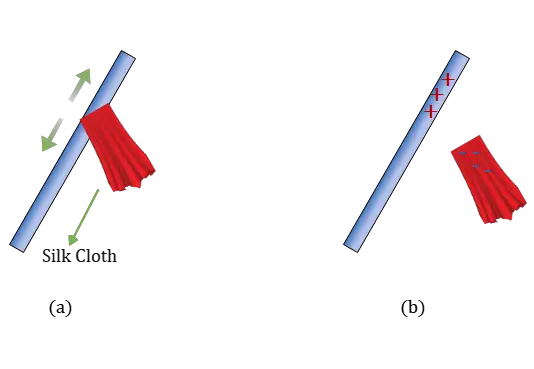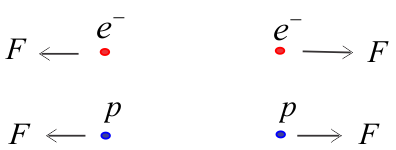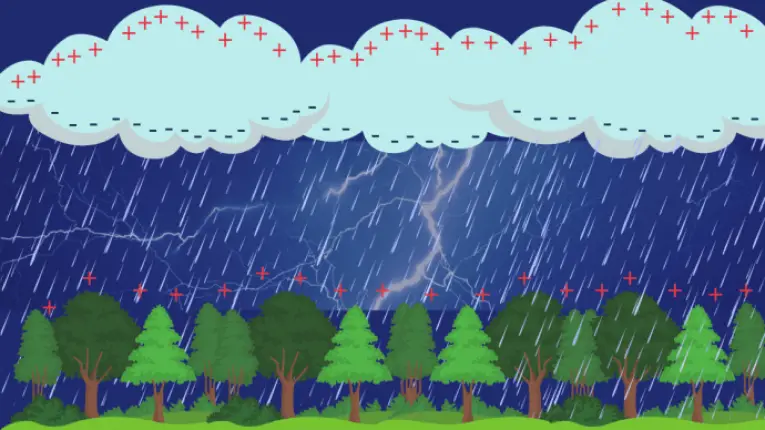

Welcome to Class 8 Science chapter 12 notes. On this page, you will find notes, questions, and answers to class 8 science chapter 12. These Some Natural Phenomena Class 8 Notes, explanations, examples, and questions and answers are according to CBSE and the NCERT textbook. If you like the study material, feel free to share the link as much as possible.
Table of contents
The natural phenomenon can be defined as the naturally occurring calamity or physical process.
Types of the natural phenomenon include
Some natural phenomena can be destructive such as
Charge is most commonly used to refer to electric charge. It is a fundamental property of matter like mass. It is a physical property because of which matter experience a force in an electromagnetic field.
Electric charges may be positive or negative in nature. If there is no net electric charge, the matter is considered neutral or uncharged.
Charges are of two types
This concept arose from the fact that when we rubbed a glass rod with silk, the glass rod gained a positive charge while the silk fabric gained a negative charge.
Electrons, protons and neutrons are fundamental particles. Electrons are negatively charged particles that move around the nucleus of an atom.
Protons are positively charged particles. Neutrons are electrically neutral which means that they carry no charge.
Both protons and neutrons are concentrated at the centre of an atom known as the nucleus of the atom. Electrons surround the nucleus.
When an object loses electrons, it becomes positively charged because it has more protons than electrons. After gaining electrons, the objects become negatively charged.
When a glass rod is rubbed with silk cloth, for example, it becomes positively charged, whereas the silk cloth becomes negatively charged.

It means that when two objects rub against each other, electrons are transferred between them and they become charged.
For example, rubbing a plastic comb through dry hair charges it. This charged object (plastic comb) can now attract other charged and uncharged objects. The charged plastic comb is capable of attracting scraps of paper.

Like charges repel each other. This means that two positive charges repel each other. Similarly, two negative charges would also repel each other.
Unlike charges, they attract each other. This means that a Positive-Negative charge would attract each other.
For example, a charged rubber balloon is repelled by another charged balloon, whereas an uncharged balloon is attracted by another charged balloon.
like charges repel

unlike charges attract

The reason for repulsion is that both the balloons contain the same type of charge, whereas attraction happens because both the balloons contain different types of charge.
The electric charge produced by rubbing is known as a static charge, whereas charges that move together form an electric current. A static charge is one that does not move.
Current electricity on the other hand is study of moving charges.
There are two ways to transfer charge from one object to another.
1. Conduction – When a charged object makes contact with a conductor, charges are transferred through the conductor. The object gains the same charge as the charged body. This method requires physical contact between the objects.
2. Induction – When a charged object is brought near a neutral object, the object gets induced and becomes charged. The object acquires the opposite charge to that of the charged body. This process doesn't require physical contact.
The transfer of electric charges does not create or destroy charges and in this process charge remains conserved.
It is a device or an instrument that can be used to test whether an object is carrying a charge or not. An electrical charge can be transferred from one charged object to another through a metal conductor. It consists of a metal rod with a thin metal strip or leaf attached to it at the bottom.
Because gold and silver are good conductors of electricity, they are commonly used to make electroscopes.
How does the electroscope detect the charge?
Discharged bodies
The body is said to be discharged if it loses its charge to the earth or any other body.
Explain why a charged body loses its charge if we touch it with our hand?
When a charged body is touched by our hand, our body conducts its charge to the earth as the human body is a good conductor of electricity.
The process of transfer of charges from a charged object to the earth takes place is called earthing.In general, every tall building has earthing to protect it from electrical shocks caused by electric current leakage.
Lightning is an electric discharge seen in the sky between oppositely charged clouds or between charged clouds and the earth. Lightning is defined as the transfer of charge from cloud to another cloud or from one cloud to the earth.
Cause of lightning
Lightning is caused by the accumulation of charges. When negative and positive charges meet, they produce a streak of bright light accompanied by sound. It causes a lot of damage.
Mostly, lightning occurs within the clouds. Lightning is also caused due to static electricity.

Lightning Conductor
A metal rod (generally made of copper) placed on top of tall buildings with its lower end connected to the ground. It is used to protect buildings from the effects of lightning. When lightning strikes, the metal rod, being a good conductor, provides an easy passage for the transfer of charge to the ground. This way, the electric discharge flows from the clouds into the ground without damaging the clouds.
Things to do during lightning
Things to avoid during lightning.
A sudden trembling or shaking of the earth for a short interval of time is caused by disturbances deep inside the earth's crust. It can cause large-scale destruction. It is not possible to predict the occurrence of an earthquake. An earthquake produces waves on the surface of the earth. Earthquakes may be caused by the sliding of tectonic plates. Sometimes, an earthquake may be followed by aftershocks that occur as the rocks settle down in their new position.
Why do earthquakes occur?
How can the intensity of an earthquake be measured?
People living in seismic zones have to be specially prepared. Firstly, the buildings in these zones should be so designed that they can withstand major tremors.
What is a Lightning Conductor?
It's a device that protects buildings from the effect of lightning.
What is the effect of lightning conductor?
The lightning can be absorbed by the conductor and sent to the surface of the land when it falls on a building.
How do you determine the intensity of earthquake?
By using Richter scale we can determine the intensity of earthquake.
What is static electricity?
Static electricity is an electric phenomenon that involves the transfer of charged particles from one body to another.